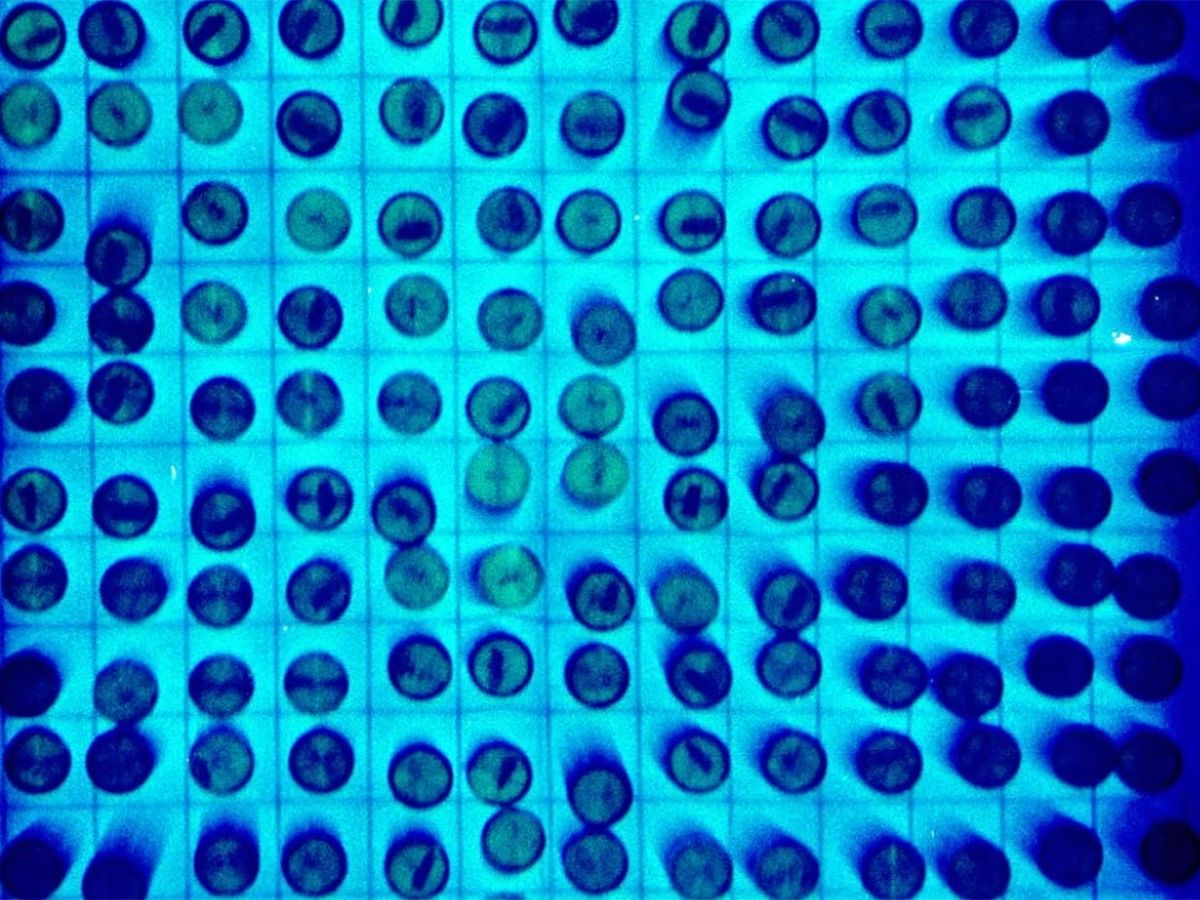At the vast reservation known as the Hanford Site in south-central Washington state, much of the activity these days concerns its 212 million liters (56 million gallons) of radioactive sludge. From World War II through the Cold War, the site produced plutonium for more than 60,000 nuclear weapons, creating enough toxic by-products to fill 177 giant underground tanks. The U.S. Department of Energy (DOE), which controls Hanford, is pushing to start “vitrifying," or glassifying, some of that waste within two years. The monumental undertaking is the nation's—and possibly the world's—largest environmental cleanup effort. It has been going on for decades and will take decades more to complete.
But the tanks are not the only outsize radioactive hazard at Hanford. The site also houses nearly 2,000 capsules of highly radioactive cesium and strontium. Each of the double-walled, stainless-steel capsules weighs 11 kilograms and is roughly the size of a rolled-up yoga mat. Together, they contain over a third of the total radioactivity at Hanford.
For decades, the capsules have resided in a two-story building called the Waste Encapsulation and Storage Facility (WESF). Inside, the capsules sit beneath 4 meters of cooling water in concrete cells lined with stainless steel. The water surrounding the capsules glows neon blue as the cesium and strontium decay, a phenomenon known as Cherenkov radiation.
Built in 1973, the facility is well beyond its 30-year design life. In 2013, nuclear specialists in neighboring Oregon warned that the concrete walls of the pools had lost structural integrity due to gamma radiation emitted by the capsules. Hanford is located just 56 kilometers (35 miles) from Oregon's border and sits beside the Columbia River. After leaving the site, the river flows through Oregon farms and fisheries and eventually through Portland, the state's biggest city.
In 2014, the DOE's Office of the Inspector General concluded that the WESF poses the “greatest risk" for serious accident of any DOE facility that's beyond its design life. In the event of a severe earthquake, for instance, the degraded basins would likely collapse, draining the cooling water. In a worst-case scenario, the capsules would then overheat and break, releasing radioactivity that would contaminate the ground and air and render parts of the Hanford Site inaccessible for years and potentially reach nearby cities.
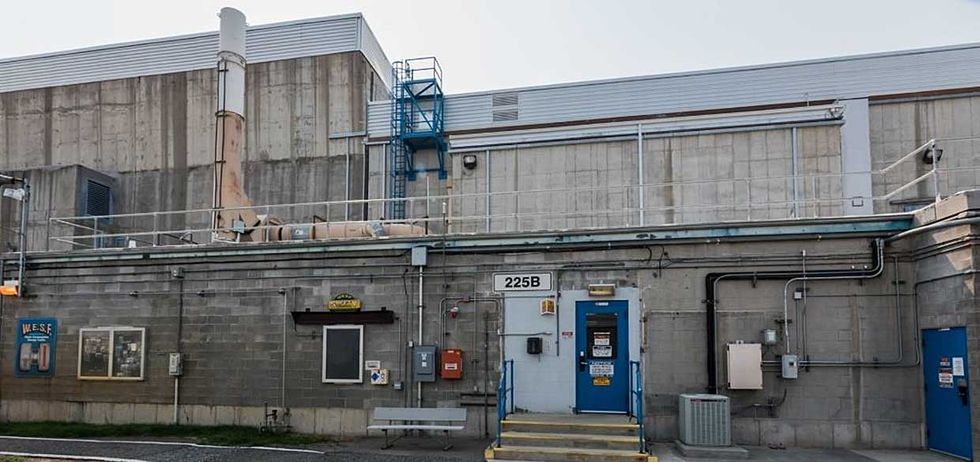
“If it's bad enough, it means all cleanup essentially stops," says Dirk Dunning, an engineer and retired Hanford expert who worked for the Oregon Department of Energy and who helped flag initial concerns about the concrete. “We can't fix it, we can't stop it. It just becomes a horrible, intractable problem."
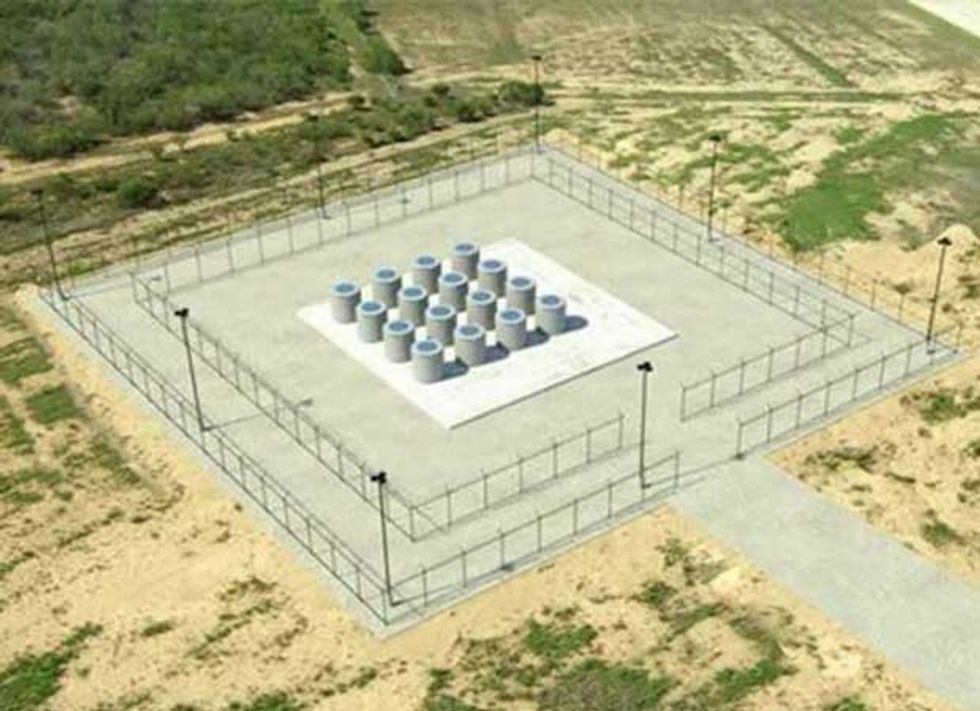
To avoid such a catastrophe, in 2015 the DOE began taking steps to transfer capsules out of the basins and into dry casks on an outdoor storage pad. The plan is to place six capsules inside a cylindrical metal sleeve; air inside the cylinder is displaced with helium to dissipate heat from the capsules. The sleeves are then fitted inside a series of shielded canisters, like a nuclear nesting doll. The final vessel is a 3.3-meter-tall cylindrical cask made of a special steel alloy and reinforced concrete. A passive cooling system draws cool air into the cask and expels warm air, without the need for fans or pools of water. The cask will sit vertically on the concrete pad. Eventually, there will be 16 to 20 casks. Similar systems are used to store spent nuclear fuel at commercial power plants, including the Columbia Generating Station at Hanford. The agency has until 31 August 2025 to complete the work, according to a legal agreement between the DOE, the state of Washington, and the U.S. Environmental Protection Agency.
When the transfer is completed, DOE estimates the new facility will save more than US $6 million per year in operating costs. But it's intended only as a temporary fix. After 50 years in dry storage—around 2075, in other words—the capsules' contents could be vitrified as well, or else buried in an unspecified deep geologic repository.
Even that timeline may be too ambitious. At a congressional hearing in March, DOE officials said that treatment of the tank waste was the “highest priority" and sought to defer the capsule-transfer work and other cleanup efforts at Hanford. They also proposed slashing Hanford's annual budget by $700 million in fiscal year 2021. The DOE Office of Environmental Management's “strategic vision" for 2020–2030 [PDF] noted only that the agency “will continue to evaluate" the transfer of capsules currently stored at the WESF.
And the COVID-19 pandemic has further complicated the department's plans. The DOE now says it “will be assessing potential impacts on all projects" resulting from reduced operations due to the pandemic. The department's FY2021 budget proposal calls for “safely" deferring work on the WESF capsule transfers for one year, while supporting “continued maintenance, monitoring, and assessment activities at WESF," according to a written response sent to IEEE Spectrum.
Unsurprisingly, community leaders and state policymakers oppose the potential slowdowns and budget cuts. They argue that Hanford's cleanup—now over three decades in the making—cannot be delayed further. David Reeploeg of the Tri-City Development Council (TRIDEC) says the DOE's strategic vision and proposed budget cuts add to the “collective frustration" at “this pattern of kicking the can down the road." TRIDEC advocates for Hanford-related priorities in the adjacent communities of Richland, Kennewick, and Pasco, Wash. Reeploeg adds that congressional support over the years has been key to increasing Hanford cleanup funding beyond the DOE's request levels.
How did Hanford end up with 1,936 capsules of radioactive waste?
The cesium and strontium inside the capsules were once part of the toxic mix stored in Hanford's giant underground tanks. The heat given off by these elements as they decayed was causing the high-level radioactive waste to dangerously overheat to the point of boiling. And so from 1967 to 1985, technicians extracted the elements from the tanks and put them in capsules.
Initially, the DOE believed that such materials, especially cesium-137, could be put to useful work, in thermoelectric power supplies, to calibrate industrial instruments, or to extend the shelf life of pork, wheat, and spices (though consumers are generally wary of irradiated foods). The department leased hundreds of capsules to private companies around the United States.
One of those companies was Radiation Sterilizers, which used Hanford's cesium capsules to sterilize medical supplies at its facilities in Decatur, Ga., and Westerville, Ohio. In 1988, a capsule in Decatur developed a pinhole leak, and 0.02 percent of its contents escaped—a mess that took the DOE four years and $47 million to clean up. Federal investigators concluded that moving the capsules in and out of water more than 7,000 times caused temperature changes that damaged the steel. Radiation Sterilizers had removed temperature-measuring systems in its facility, among other failures cited by the DOE. The company, though, blamed the government for shipping a damaged capsule. Whatever the cause, the DOE recalled all capsules and returned them to the WESF.
The WESF now contains 1,335 capsules of cesium, in the form of cesium chloride. Most of that waste consists of nonradioactive isotopes of cesium; of the radioactive isotopes, cesium-137 dominates, with lesser amounts of cesium-135. Another 601 capsules contain strontium, in the form of strontium fluoride, with the main radioactive isotope being strontium-90.
Cesium-137 and strontium-90 have half-lives of 30 years and 29 years, respectively—relatively short periods compared with the half-lives of other materials in the nation's nuclear inventory, such as uranium and plutonium. However, the present radioactivity of the capsules “is so great" that it will take more than 800 years for the strontium capsules to decay enough to be classified as low-level waste, according to a 2003 report by the U.S. National Research Council. And while the radioactivity of the cesium-137 will diminish significantly after several hundred years, cesium-135 has a half-life of 2.3 million years, which means that the isotope will eventually become the dominant source of radioactivity in the cesium capsules, the report said.
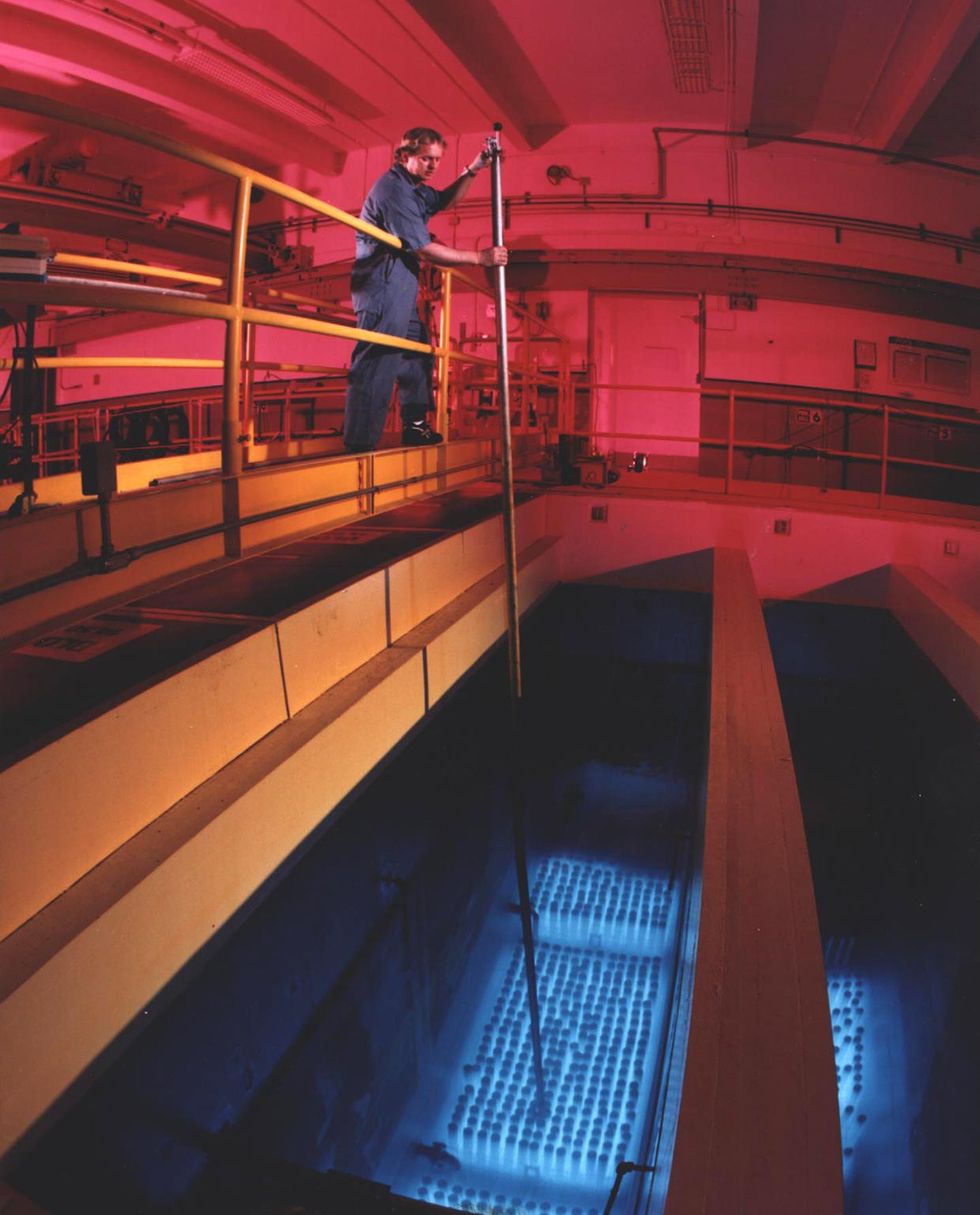
Workers at Hanford continue to monitor the condition of the capsules by periodically shaking the containers using a long metal gripping tool. If they hear a “clunk," it means the inner stainless-steel pipe is moving freely and is thus considered to be in good condition. Some capsules, though, fail the clunk test, which indicates the inner pipe is damaged, rusty, or swollen, and thus can't move. About two dozen of the failed capsules have been “overpacked"—that is, sealed in a larger stainless-steel container and held separately.
Moving the capsules from wet storage to dry is only temporary
The DOE has made substantial progress on the capsule-transfer work in recent years. In August 2019, CH2M Hill Plateau Remediation Company, one of the main environmental cleanup contractors at Hanford, completed designs to modify the WESF for removal of the capsules. In the weeks before COVID-19 temporarily shut down the site in late March, crews had started fabricating equipment to load capsules into sleeves, transfer them into casks, and move them outside. A team cleaned and painted part of the WESF to make way for the loading crane. At the nearby Maintenance and Storage Facility, workers were building a mock-up system to allow people to train and test equipment.
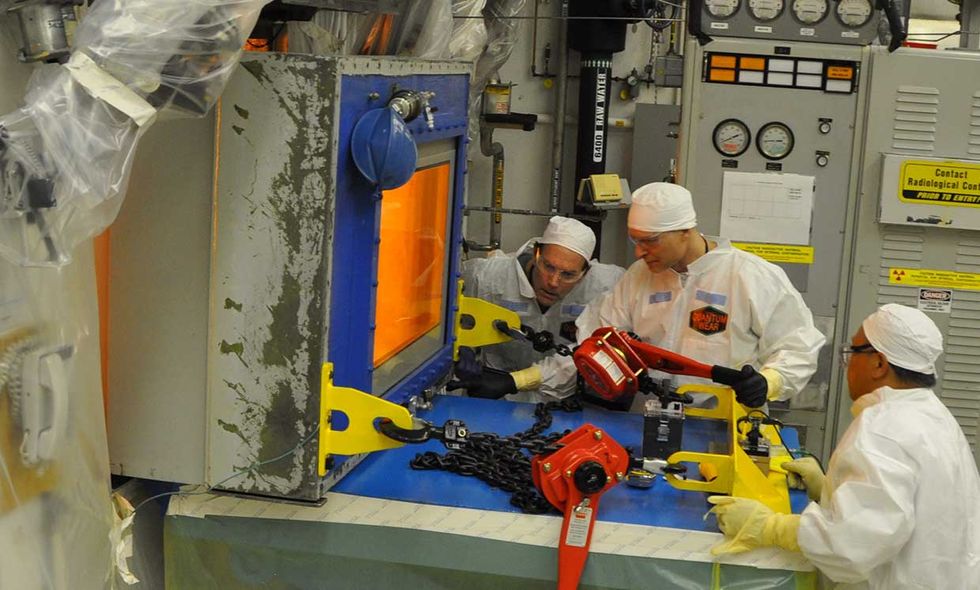
During the lockdown, employees working remotely continued with technical and design reviews and nuclear-safety assessments. With Hanford now in a phased reopening, CH2M Hill workers recently broke ground on the site of the future dry cask storage pad and have resumed construction at the mock-up facility. Last October, the DOE awarded Intermech, a construction firm owned by Emcor, a nearly $5.6 million contract to build a reinforced-concrete pad surrounded by two chain-link fences, along with utility infrastructure and a heavy-duty road connecting the WESF to the pad.
However, plans for fiscal year 2021, which starts in October, are less certain. In its budget request to Congress in February, the DOE proposed shrinking Hanford's annual cleanup budget from $2.5 billion to about $1.8 billion. Officials sought no funding for WESF modification and storage work, eliminating $11 million from the current budget. Meanwhile, the agency sought to boost funding for tank-waste vitrification from $15 million to $50 million. Under its legal agreements, the DOE is required to start glassifying Hanford's low-activity waste by 2023.
Reeploeg of the Tri-City Development Council says the budget cuts, if approved, would make it harder for the capsule-transfer project to stay on track.
Along with vitrification, he told Spectrum, “we think WESF is a top priority, too. Considering that the potential consequences of an event there are so significant, we want those capsules out of the pool and into dry-cask storage as quickly as possible."
Reeploeg said the failure of another aging Hanford facility should have been a wake-up call. In 2017, a tunnel that runs into the Plutonium Uranium Extraction Plant partially collapsed, exposing highly radioactive materials. Officials had been aware of the tunnel's structural problems since the 1970s. Ultimately, no airborne radiation leaks were detected, and no workers were hurt. But in a February 2020 report, the Government Accountability Office said the DOE hadn't done enough to prevent such an event.
Hanford experts at Washington state's Department of Ecology said a short-term delay on the WESF mission won't significantly increase the threat to the environment or workers.
“We don't believe that there's an immediate health risk from a slowdown of work," says Alex Smith, the department's nuclear waste program manager. So long as conditions are properly maintained in the pool cells, the capsules shouldn't see any noticeable aging or decay in the near-term, she says, but it still makes sense to transfer the capsules to reduce the risk of a worst-case disaster.
In an email to Spectrum, the DOE noted that routine daily inspections of the WESF pool walls haven't revealed any visible degradation or spalling—flaking that occurs due to moisture in the concrete.
Still, for Hanford watchdogs, the possibility of any new delays compounds the seemingly endless nature of the environmental cleanup mission. Ever since Hanford shuttered its last nuclear reactor in 1987, efforts to extract, treat, contain, and demolish radioactive waste and buildings have proceeded in fits and starts, marked by a few successes—such as the recent removal of 27 cubic meters of radioactive sludge near the Columbia River—but also budgeting issues, technical hurdles, and the occasional accident.
“There are all these competing [cleanup projects], but the clock is running on all of them," says Dunning, the Oregon nuclear expert. “And you don't know when it's going to run out."
